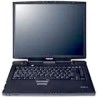Toshiba PS610U-NGYSG7 User Manual - Page 79
Windows special keys, Overlay keys, Start key, Application key
 |
View all Toshiba PS610U-NGYSG7 manuals
Add to My Manuals
Save this manual to your list of manuals |
Page 79 highlights
Learning the Basics Using the keyboard 79 Windows special keys Start key Application key The Windows special keys Your computer's keyboard has two keys that have special functions in Windows: ❖ Start key-Opens the Start menu ❖ Application key-Has the same function as the secondary mouse (or AccuPoint II) button Overlay keys The keys with gray numbers and symbols on the front of them form the numeric and cursor overlay. This overlay lets you enter numeric data or control the cursor as you would using the 10-key keypad on a desktop computer's keyboard. & 7 Home 7 U * 8 8 ( 9 PgUp 9 I O ) 0 * P 4 5 6 - J K L : End 1 2 PgDn 3 ; + M < , Ins 0 > . Del . ? / / Home 7 8 PgUp 9 4 5 6 - End 1 2 PgDn 3 + Ins 0 Del . / Numeric and cursor control overlay















